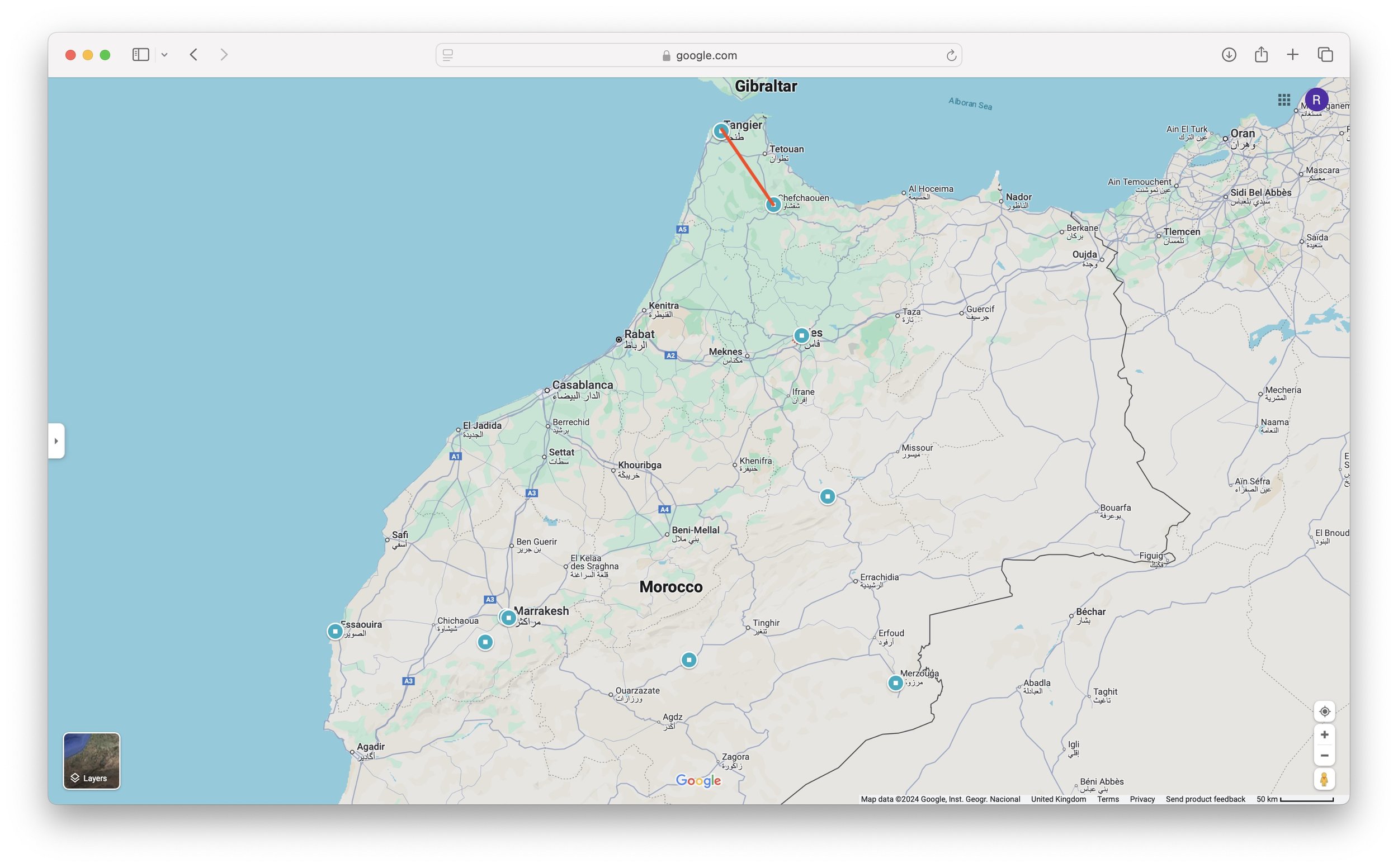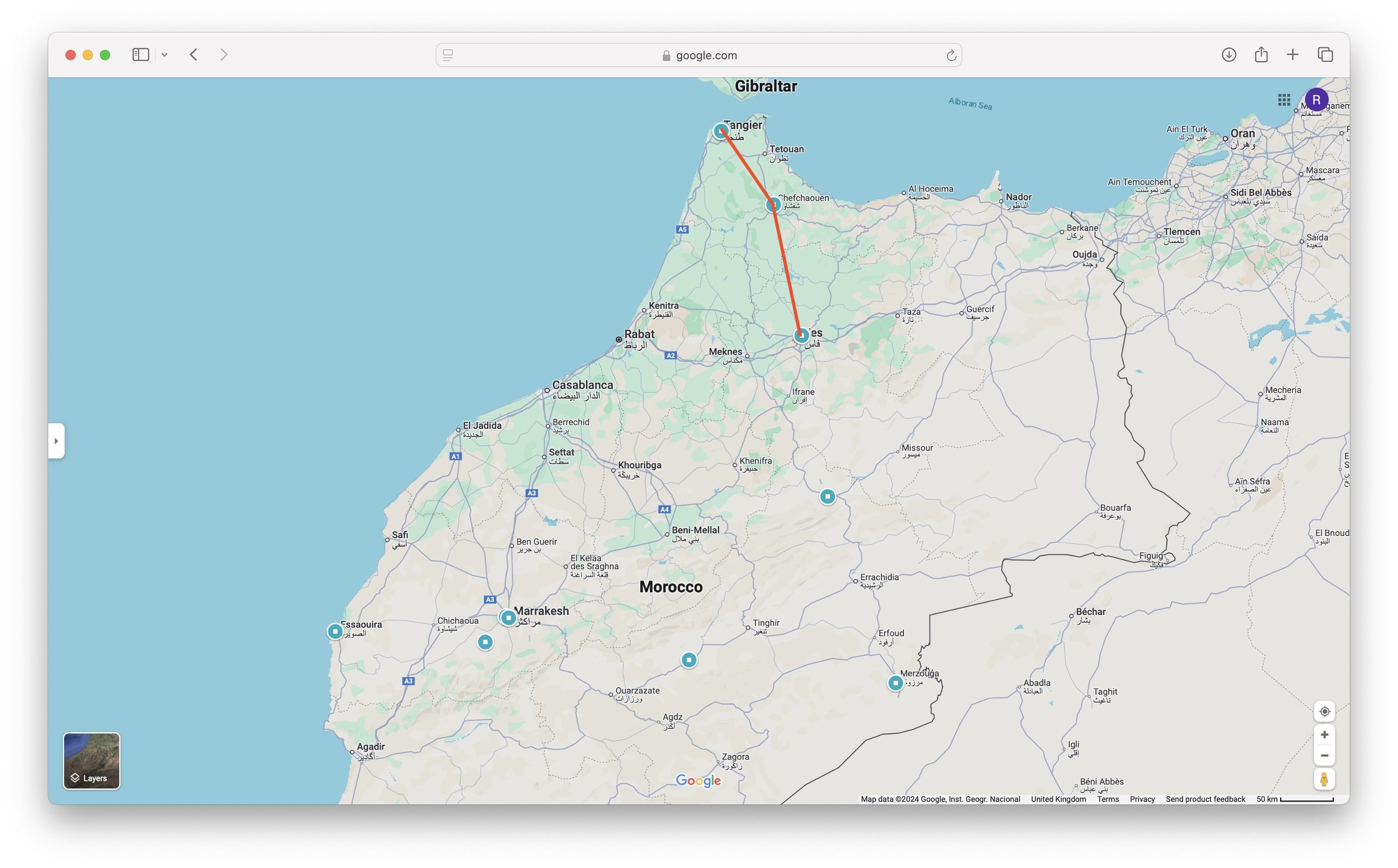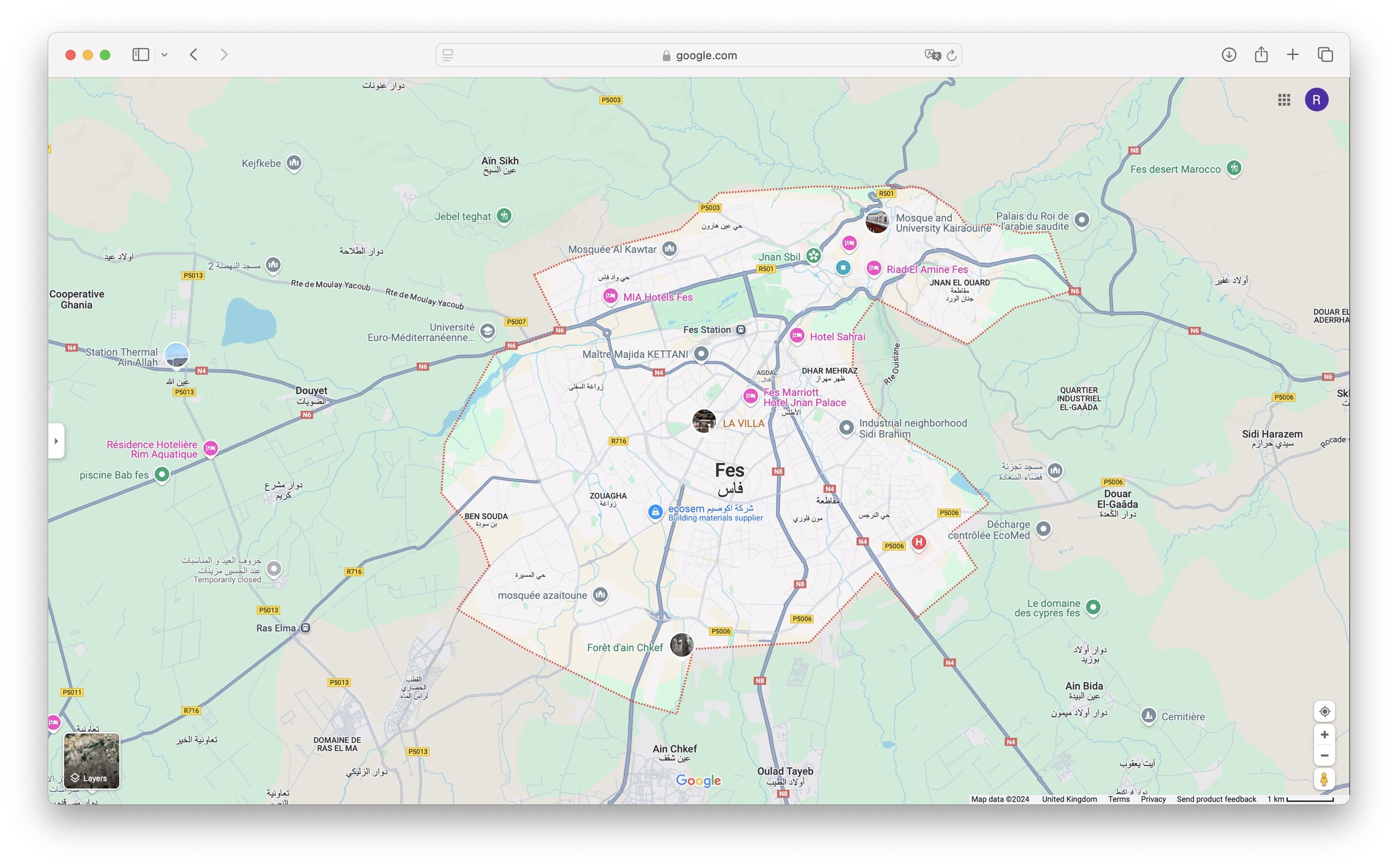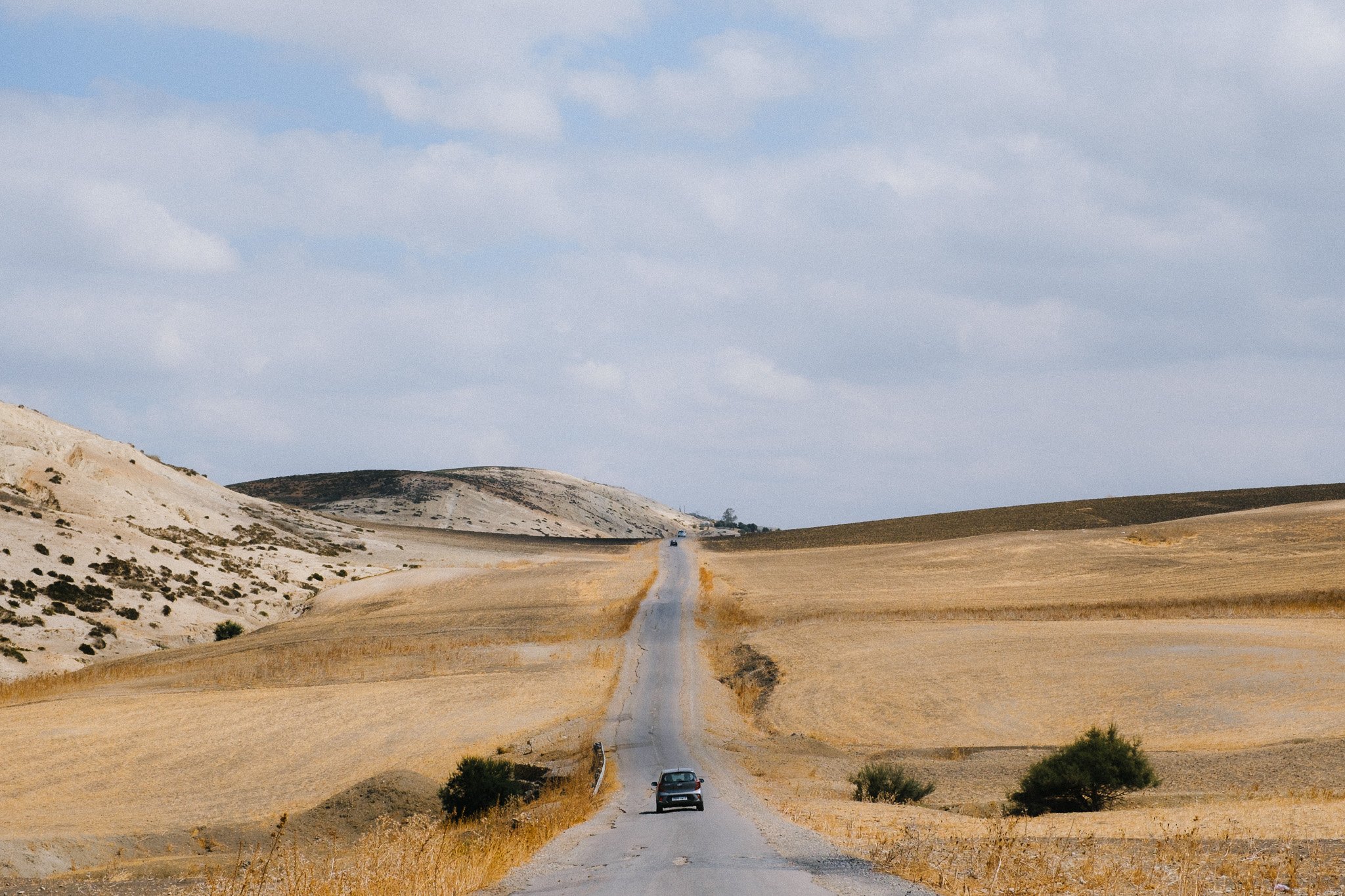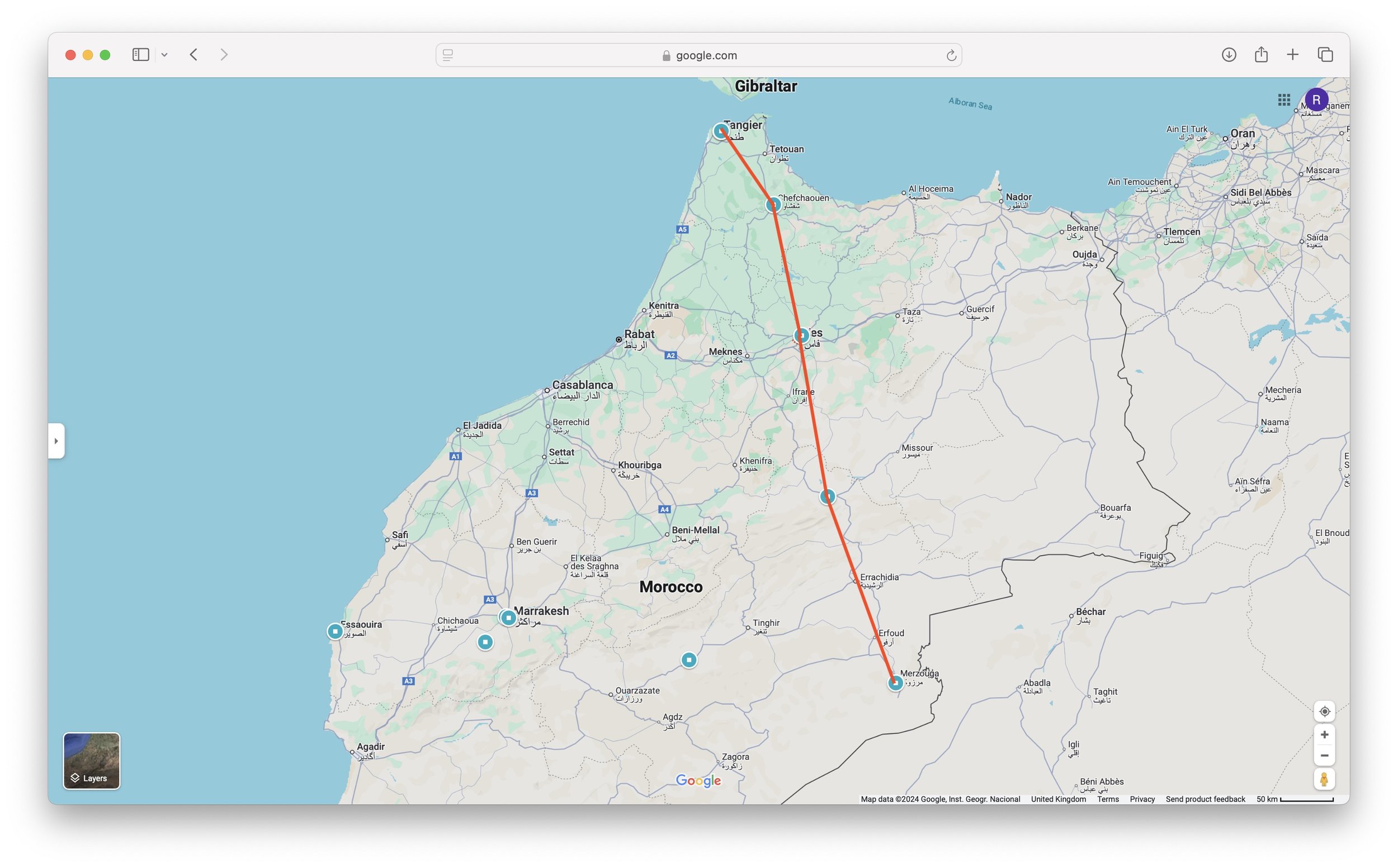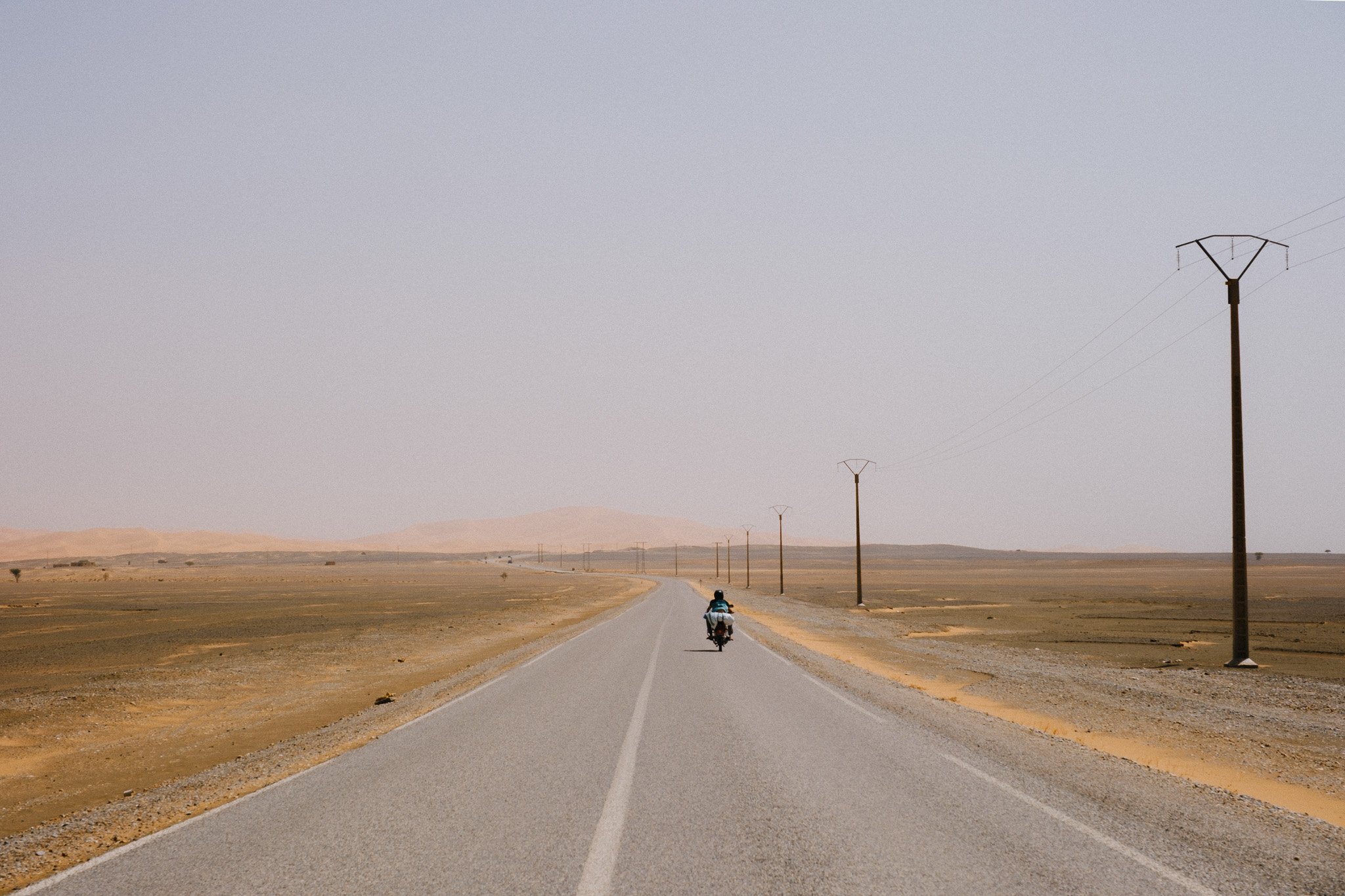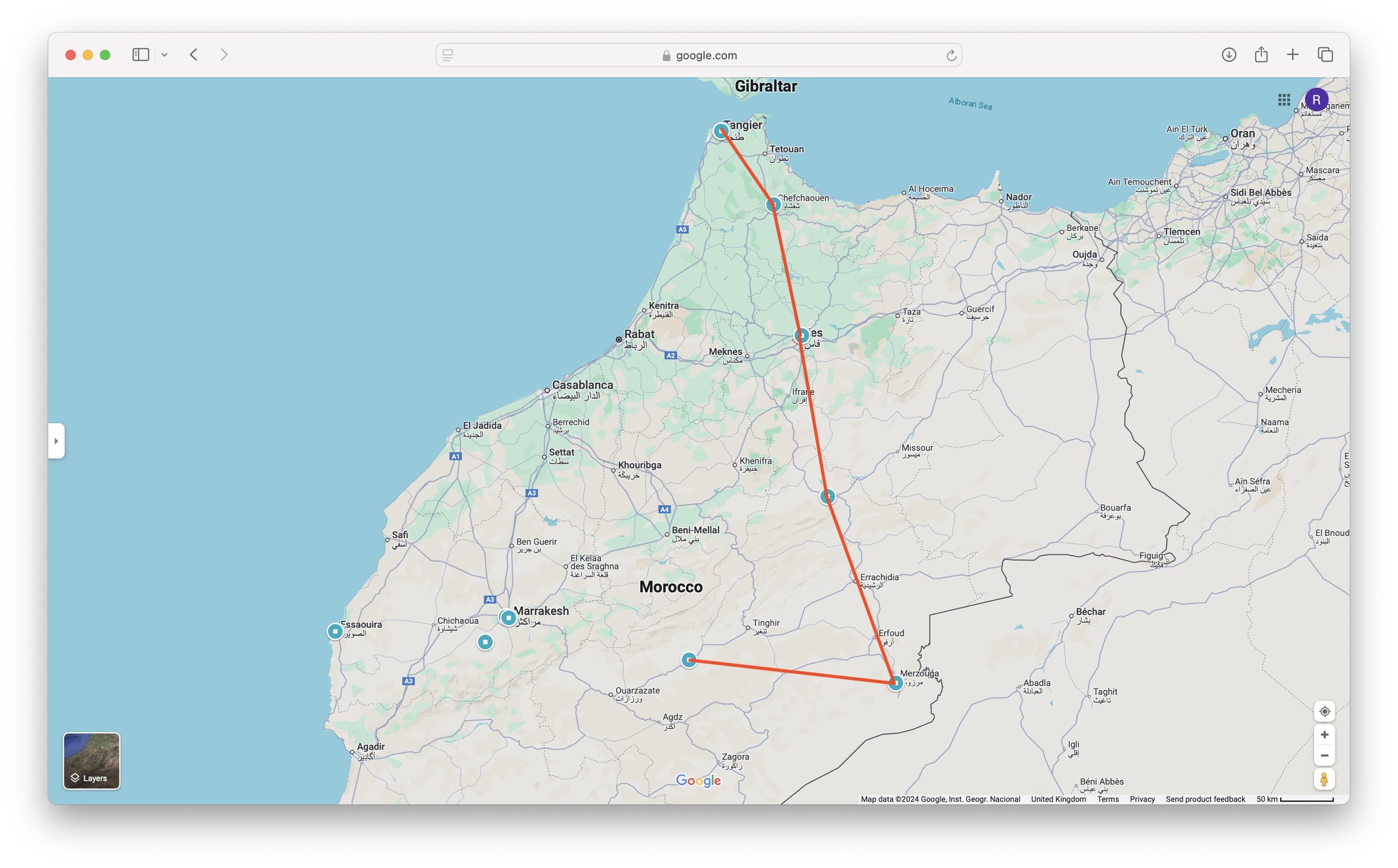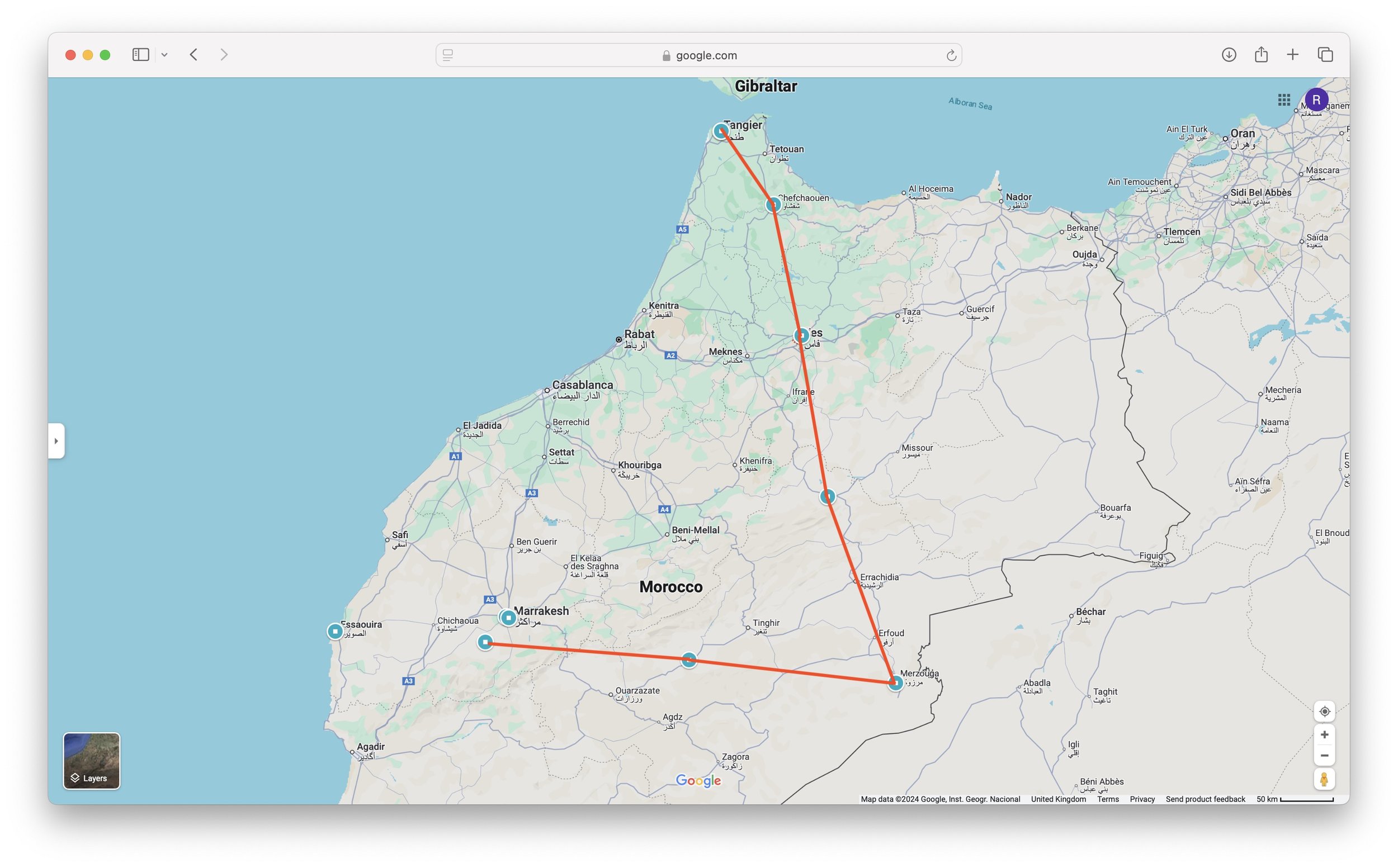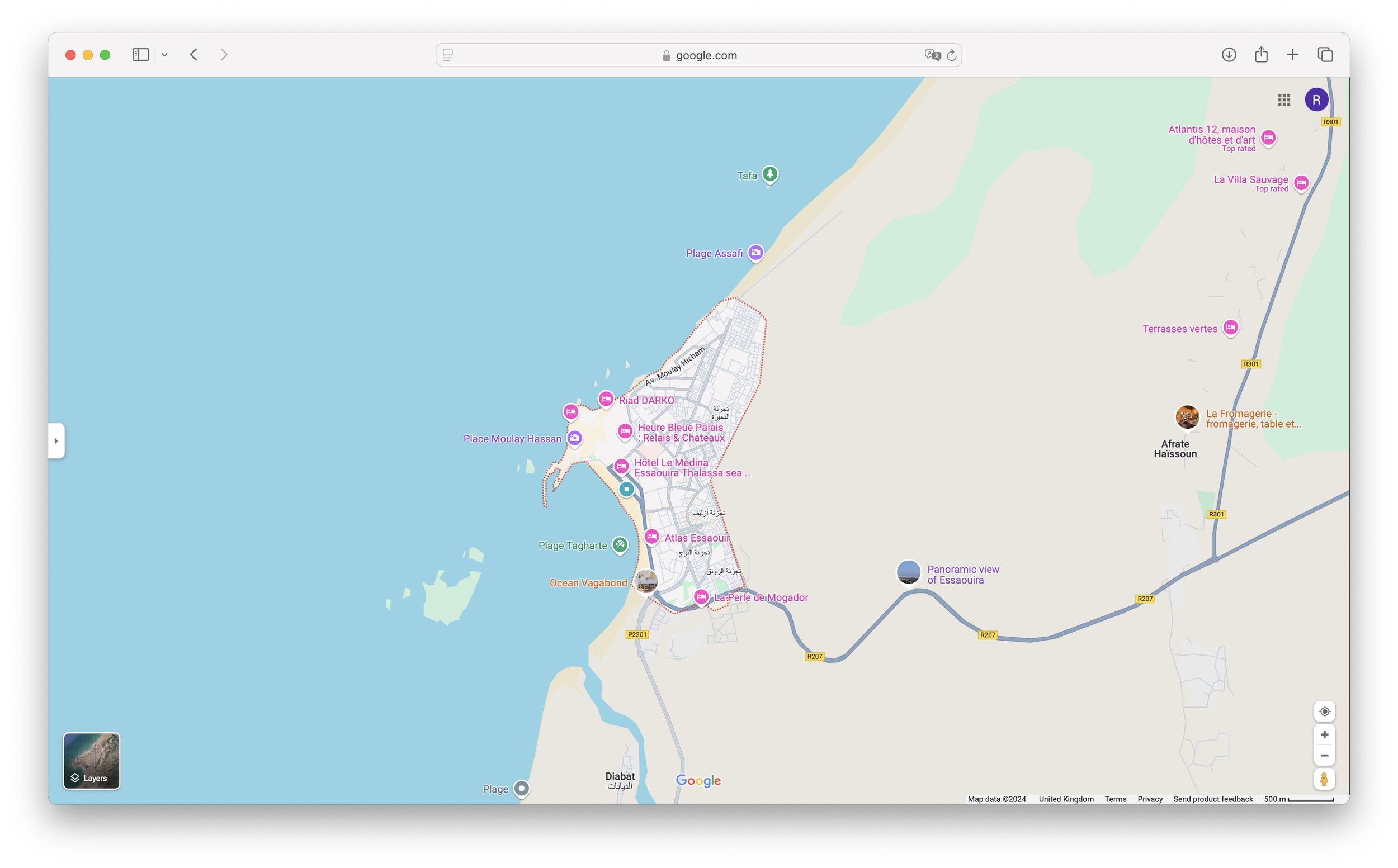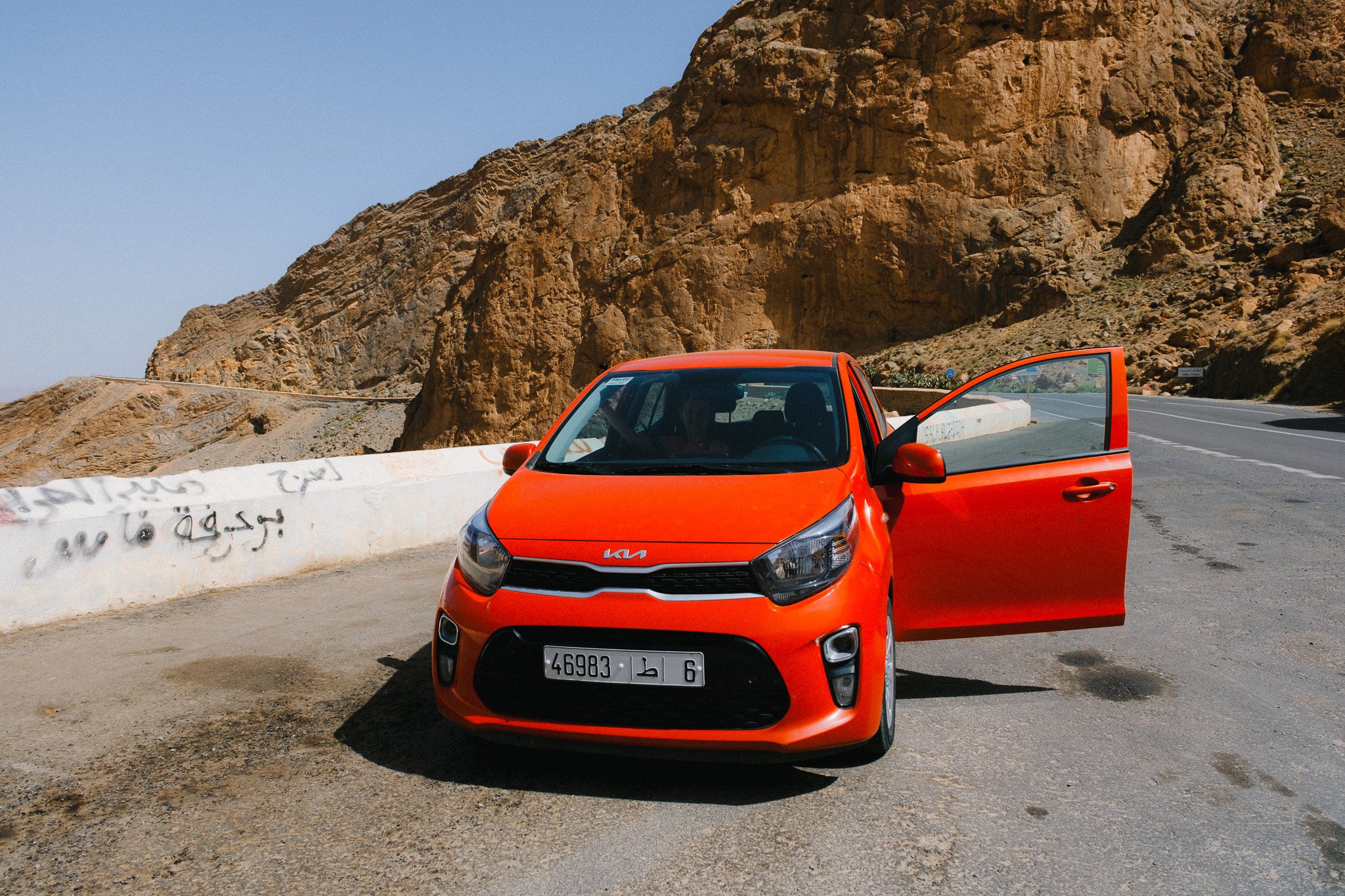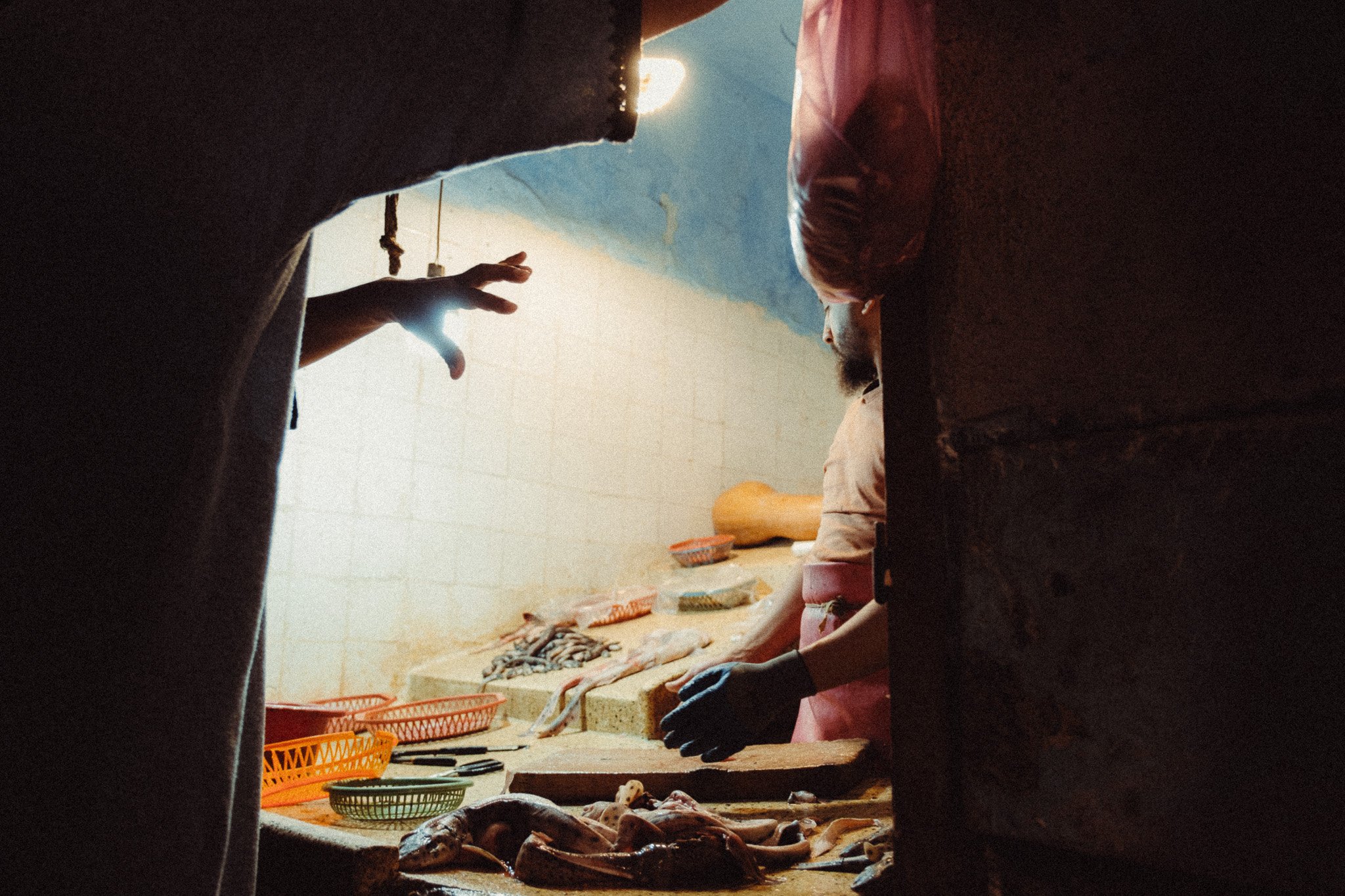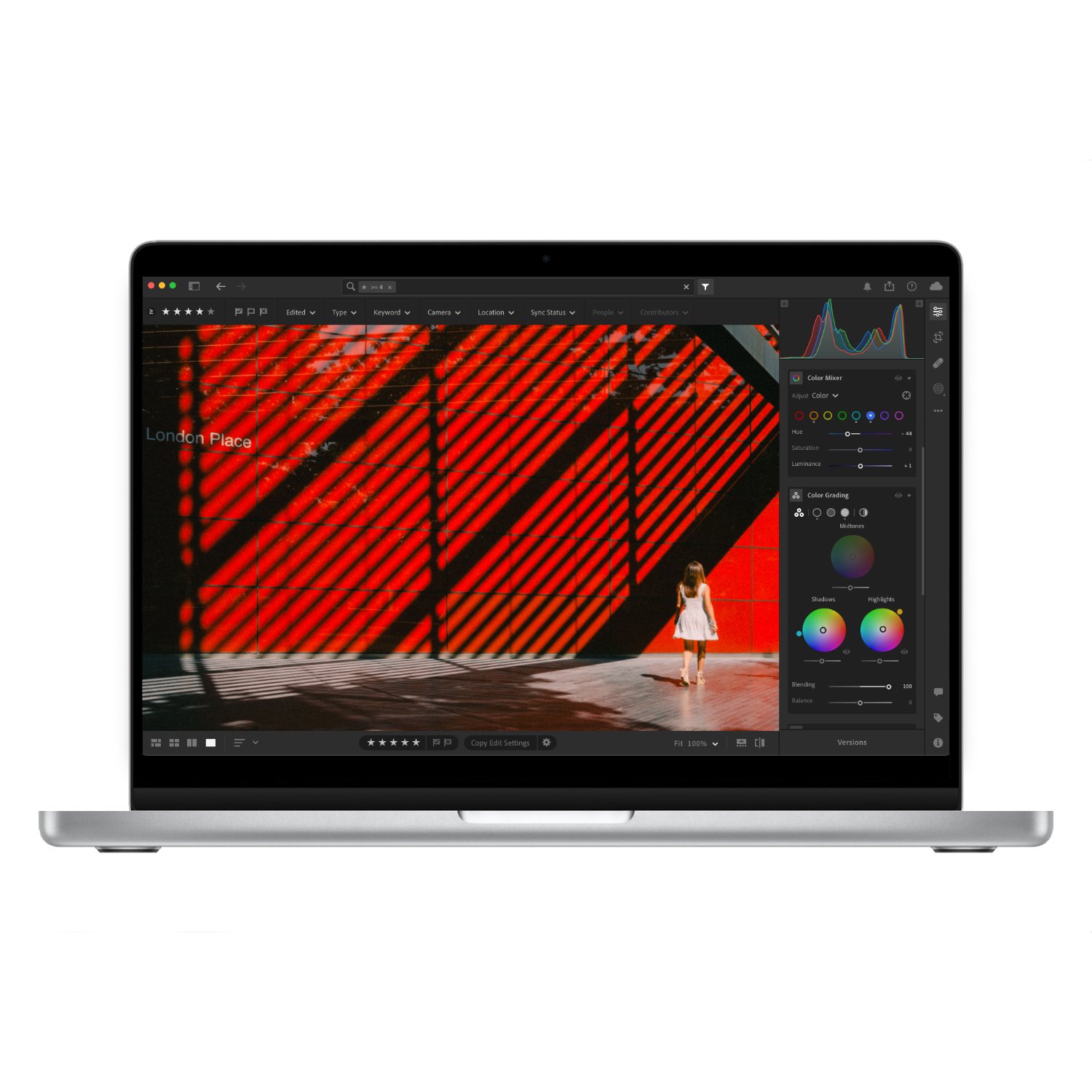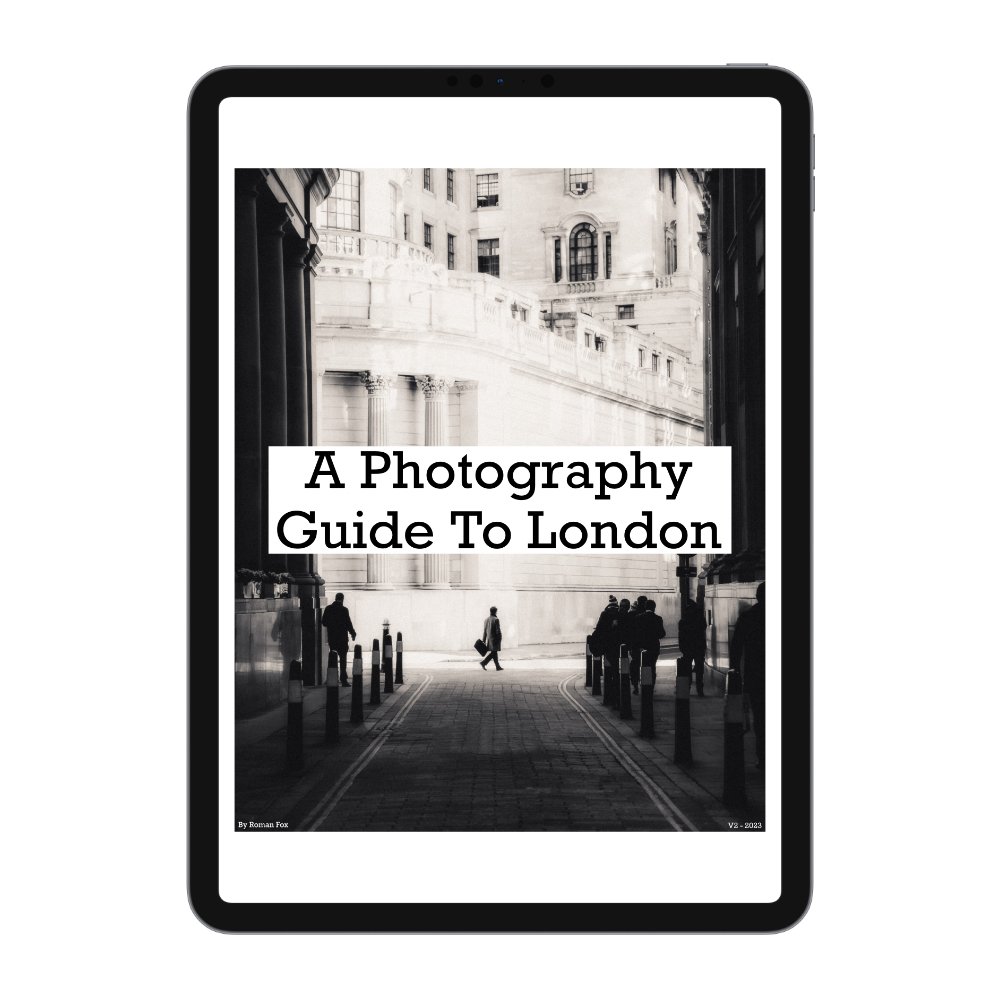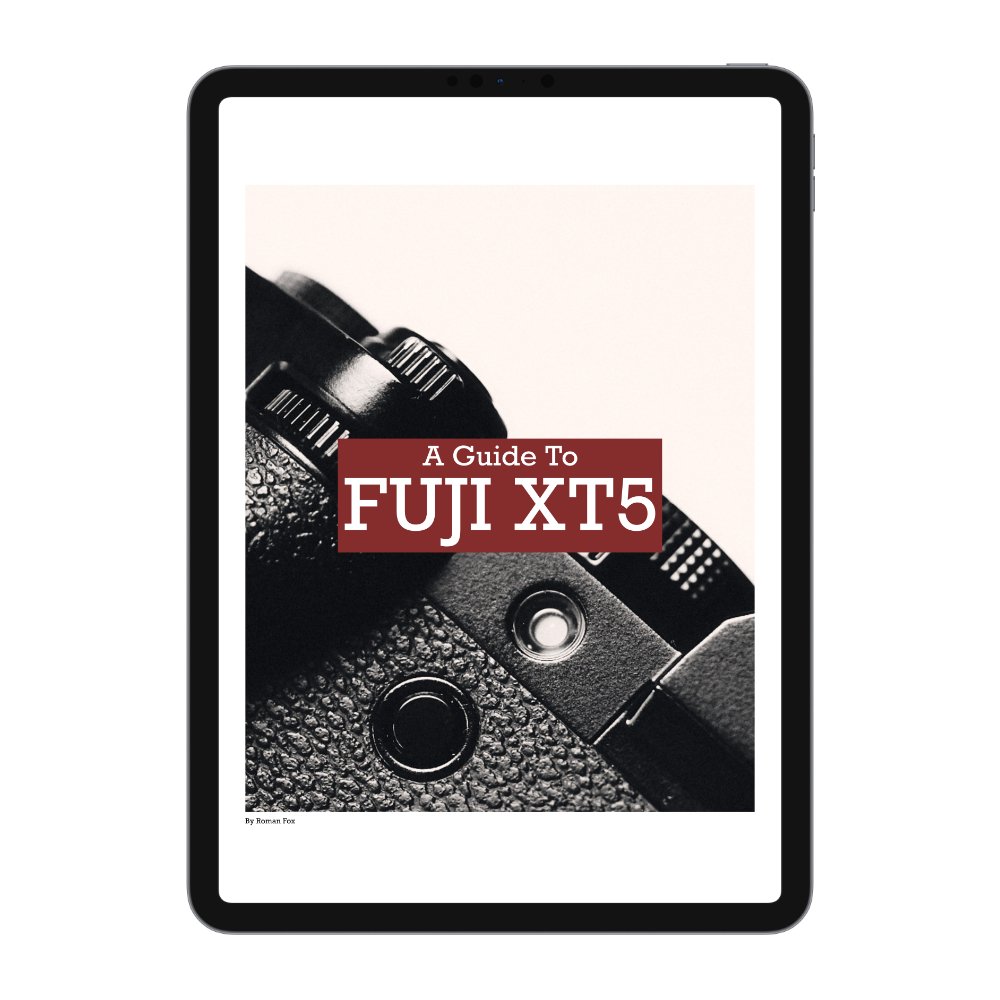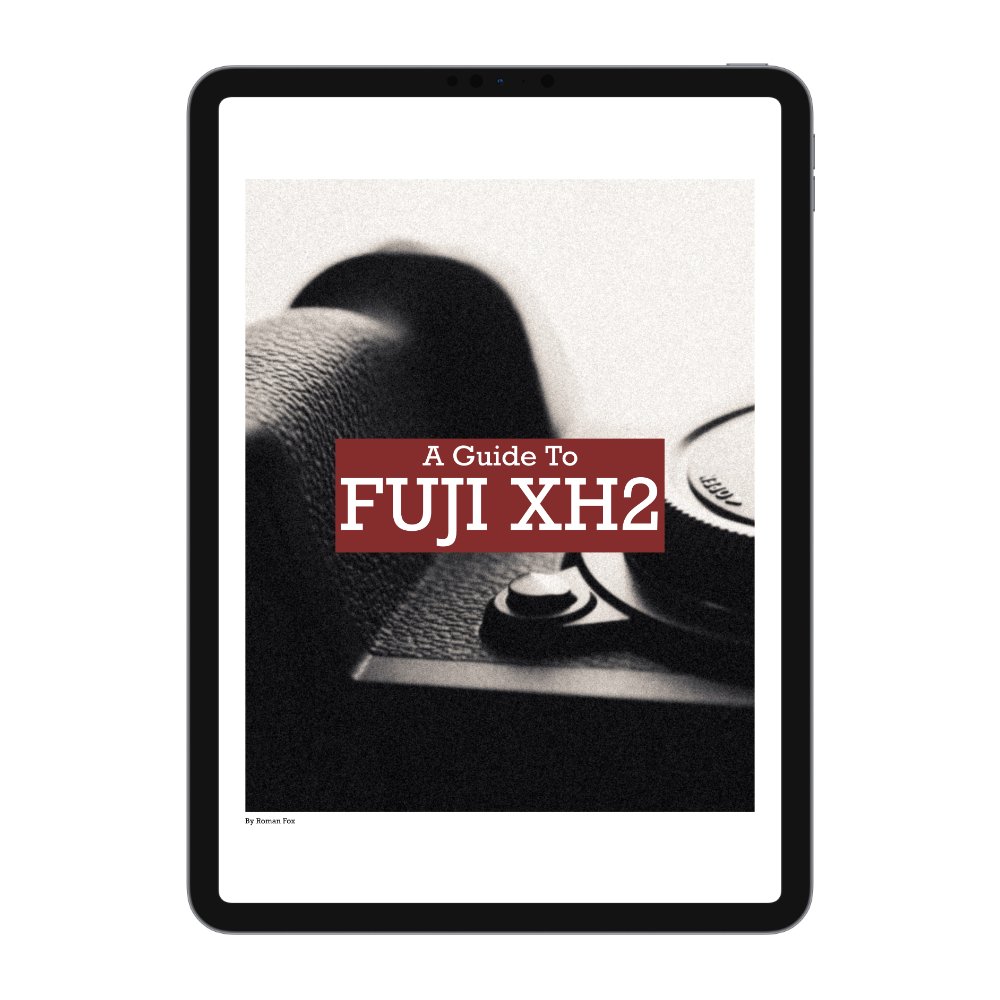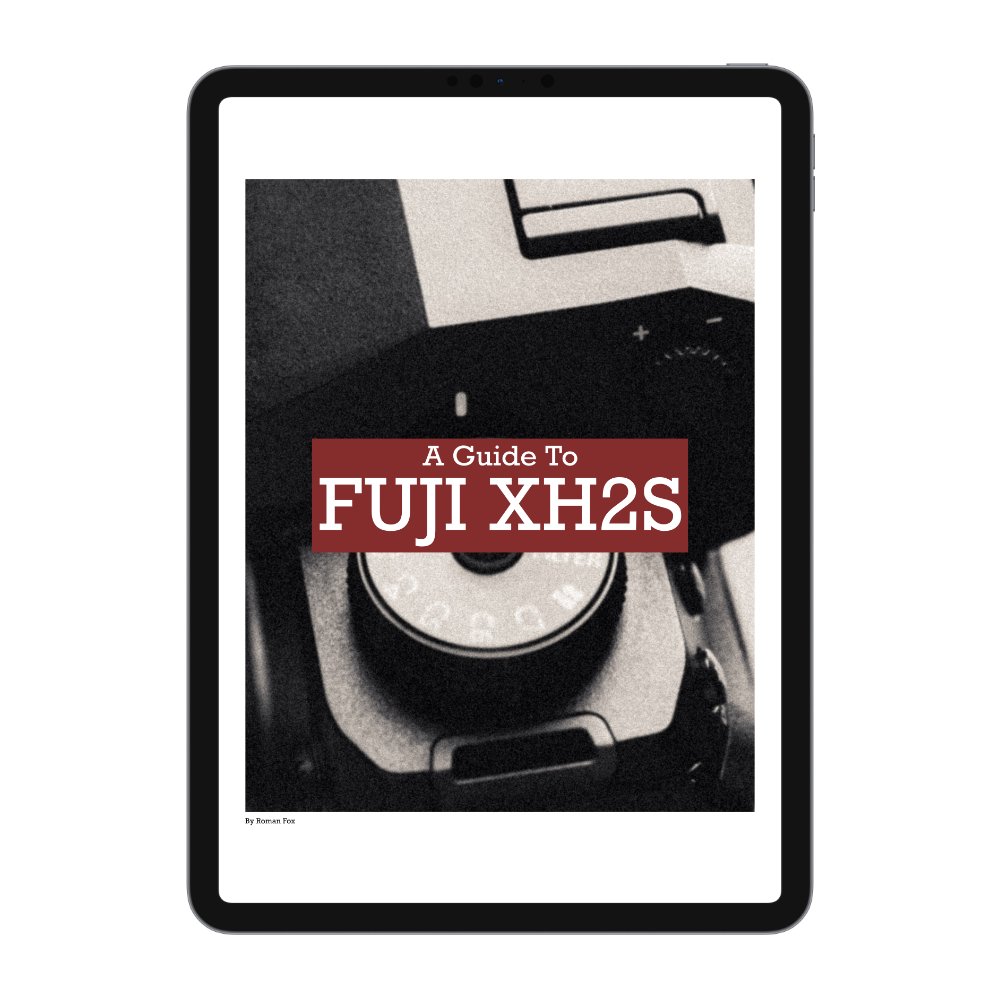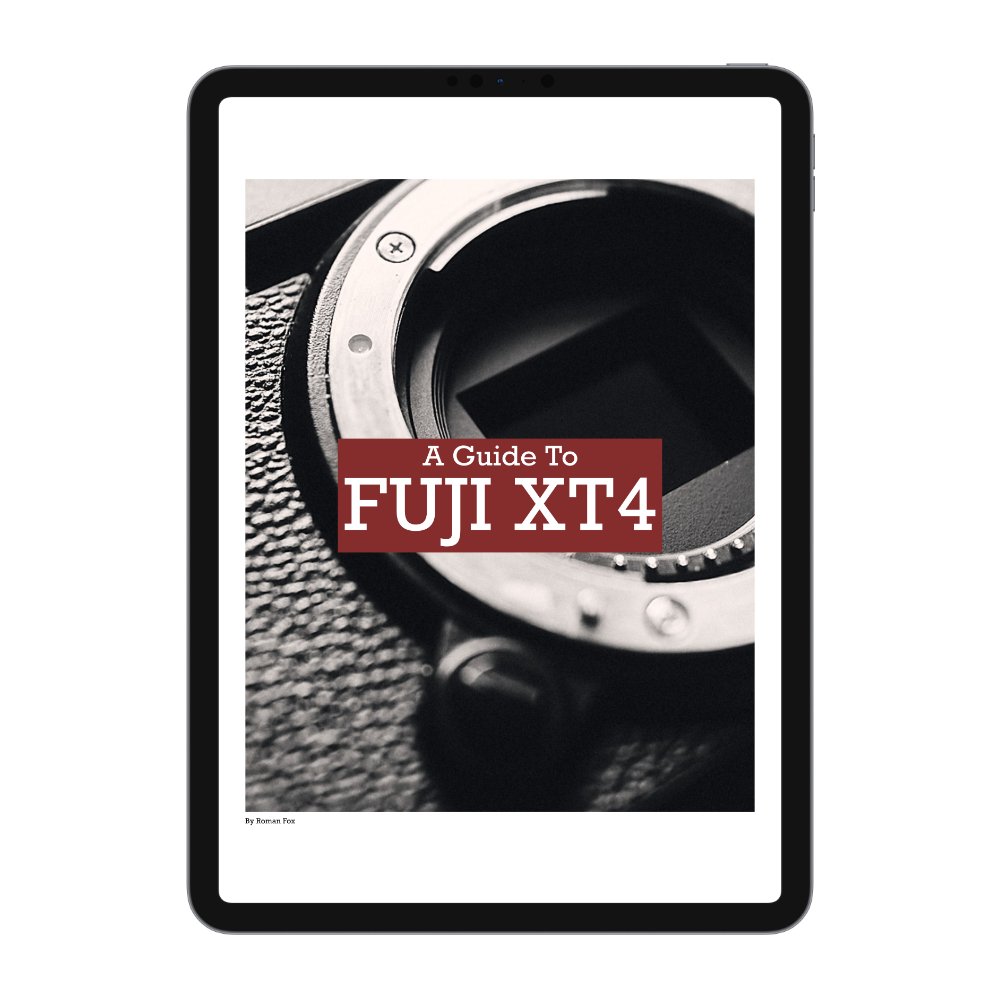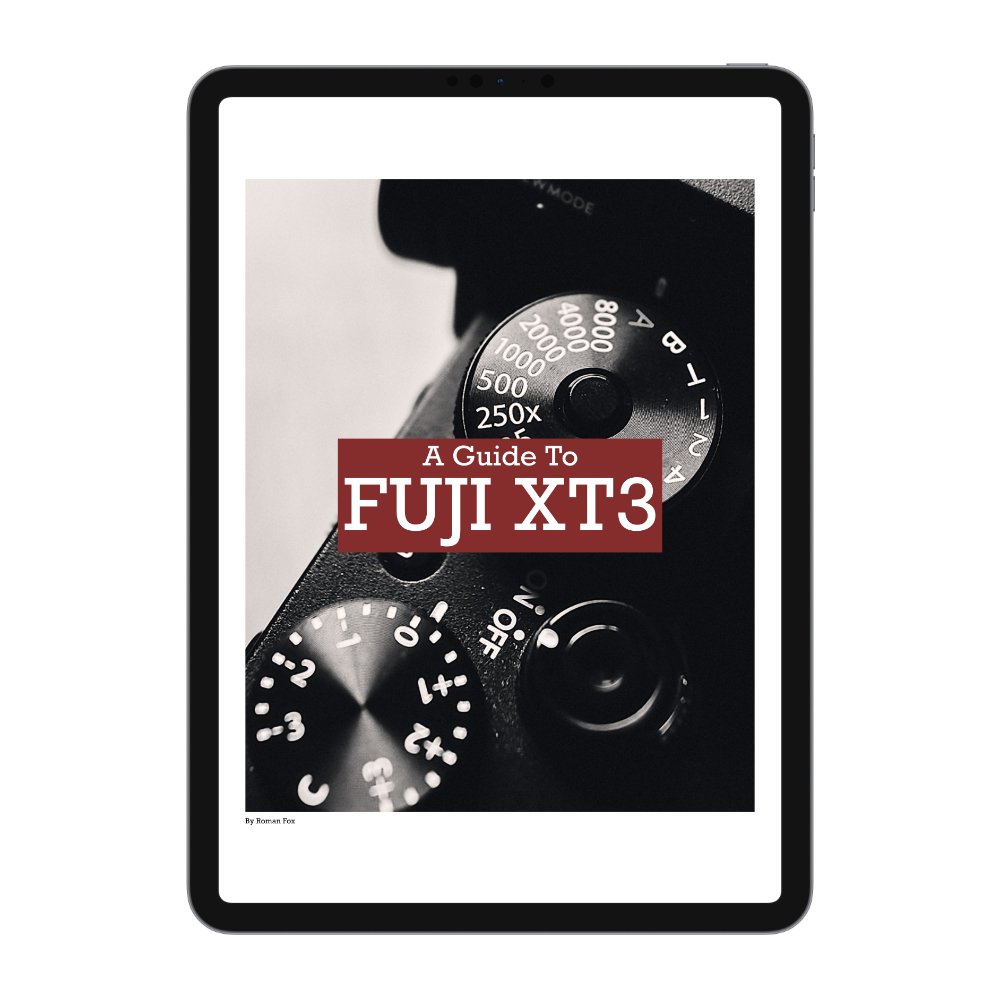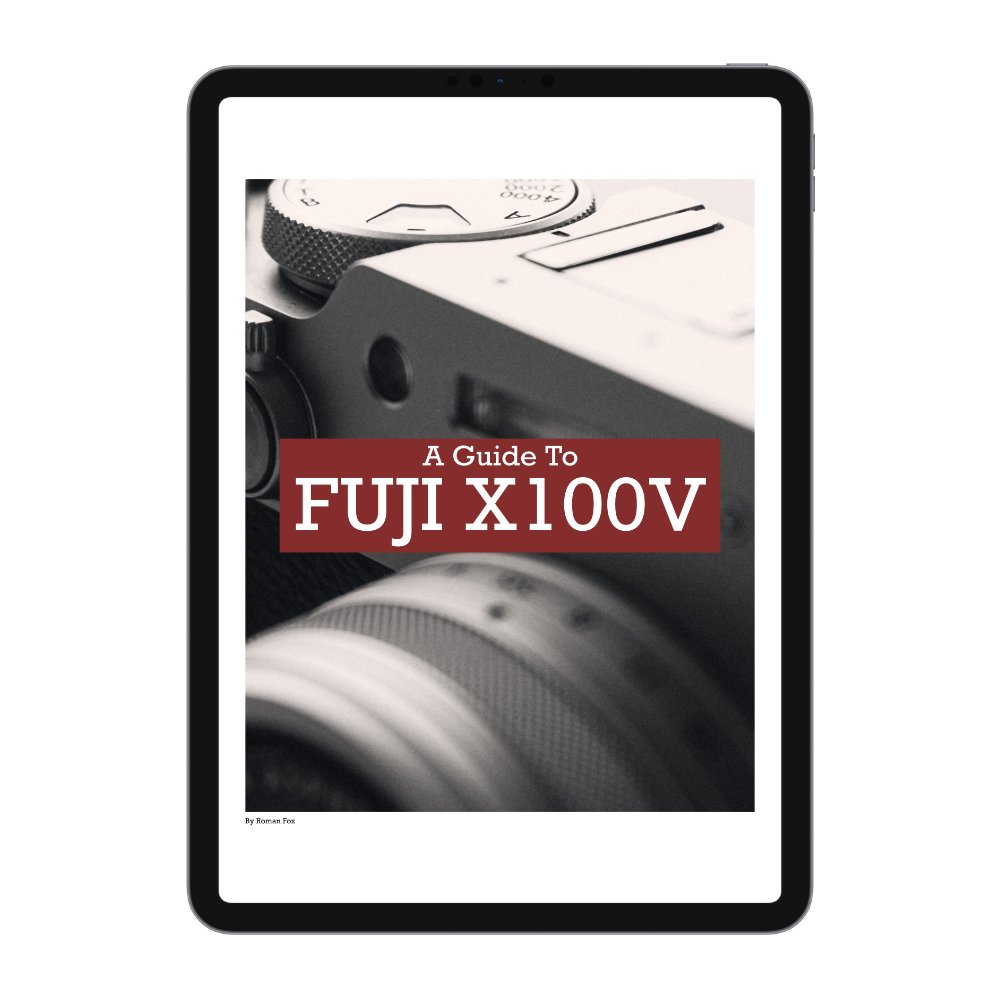The Perfect Morocco Road Trip (Travel Guide)
In this blog, I will share the perfect 17-day Moroccan road trip. You can treat this as a travel guide or a tool to help you plan your trip. Everything shared here is based on our personal experience, and the trip was entirely self-funded.
The Route
Here’s a brief outline of the route, and I will go into more detail about each major city later in the blog. The itinerary may vary depending on which city you arrive in. However, since we took a ferry from Spain, it made sense to start in Tangier and finish in Marrakesh. Another thing to note is that this trip can be condensed into 14 days or fewer if you spend less time in each city and have longer drives. We aimed to limit our driving to a maximum of 5 hours per day, leaving plenty of time for relaxation.
Day 1 - Tangier
If you’re taking a ferry from Spain, make sure it’s the one from Tarifa, as this will take you right into the city centre. From there, you can walk to your hotel or the Medina. We spent the first day exploring Tangier.
Day 2 - Tangier to Chefchaouen
On the second day, we drove from Tangier to Chefchaouen, which took around 3 hours.
Day 3 - Chefchaouen
The third day was spent exploring Chefchaouen.
Day 4 - Chefchaouen to Fes
The drive from Chefchaouen to Fes took about 4 hours. Don’t forget to get coffee from the little cars on the side of the road, it’s good.
Day 5 - Fes
We spent a full day exploring Fes.
Day 6 - Fes to Midelt
We chose a hotel just outside of Midelt as it was a halfway stop to Merzouga. The drive took around 4 and a half hours.
Day 7 - Midelt to Merzouga
This drive took just over 4 hours. We arrived in Merzouga at 2 pm and had the whole afternoon to climb the sand dunes and explore. The main road was flooded due to recent rain, so we had to take sand-covered back roads instead.
Day 8 - Merzouga to Rose Valley
This was a 5-hour drive. Rose Valley looks stunning and is a great stop if you’re visiting in season (spring). However, if I were to do this trip again, I’d choose somewhere more convenient and save a couple of hours of driving. That said, the view from our hotel was incredible.
Day 9 - Rose Valley to Agafay Desert
Agafay Desert was a halfway point between Essaouira and Rose Valley. We could have stayed somewhere more accessible, but this was the more interesting choice. This was the longest drive of the trip, taking us 7 hours. The Agafay Desert Hotel felt like an oasis, with birds chirping, a clear night sky, and tranquillity. It was a fantastic stop.
Day 10 - Agafay Desert to Essaouira
The next day, we drove 3 hours to Essaouira and then wandered around the Medina.
Day 11 - Essaouira
Day 11 was meant for exploring Essaouira, but unfortunately, I fell ill and spent the entire day in bed.
Day 12 - Essaouira to Marrakesh
This was a 3-hour drive back to Marrakesh, where we returned the car and checked into our hotel in the Medina for the rest of the trip.
Days 13 to 17 - Marrakesh
The last four days were set aside for exploring Marrakesh. However, I spent the first two days bedridden due to illness again. The final two days were spent exploring the Medina before flying back to London.
Driving vs Public Transport
In most cases, I can argue for both methods of travel, but in the case of Morocco, I strongly recommend hiring a car and driving yourself for several reasons. First of all, public transport here can be hit or miss, with schedules changing at the last minute, along with delays and cancellations. Secondly, the buses and taxis we saw on the road appeared overcrowded, and judging by the open doors, they didn’t seem to have working air conditioning.
The third reason is that there are many amazing spots to stop at along the way, from small coffee stalls to breathtaking viewing platforms. Fourthly, having a car gives you control when travelling across a country. If plans change, you can be flexible, and in an emergency, you can take immediate action without relying on anyone else.
The final and biggest reason I recommend driving is safety — both personal and road safety. I lost count of how many times we were overtaken by taxis and buses on blind bends while we were already at or slightly above the speed limit. Some of these overtakes were complete gambles, as there was no way the driver could see what was coming around the corner. In all cases, the buses and taxis were packed with passengers. Why the rush? Perhaps the drivers were trying to get more jobs done and make more money. Either way, I’m glad we didn’t rely on public transport, as I wasn’t comfortable with someone else playing chicken with my life on the road.
Driving Tips
We hired a car from Hertz, which came with an almost empty fuel tank, no windscreen washer fluid, and was covered in scratches. Make sure to note all these things so you don’t get charged for them later. Always add at least an hour to whatever time your sat nav indicates, as there are many police checkpoints with random stops to check documents.
Watch out for hidden speed traps, especially in areas where a low speed limit seems unnecessary. Frequently, the speed limit will drop from 80 to 60 for just 100 metres before returning to 80, with no clear reason — but there will often be a speed trap in the 60 zone. If you're caught speeding, you'll be pulled aside at the next police checkpoint and fined. I was flashed doing 70 in a 60 and had to pay 150 Dirhams. The fine must be paid in cash on the spot, so ensure you have enough cash for such occurrences. Also, be sure to get a receipt as proof of payment. At random stops, police will ask for your driving licence, passport, and the car’s registration card, so keep these handy.
Half the fuel stations we encountered only accepted cash, and all had attendants to fill your car for you. Triple-check they are using the correct fuel to avoid ruining your trip. Some drives won’t have a fuel station for long stretches, so always top up when you can, and never let your tank drop below half full.
Driving in cities can be chaotic, with erratic motorbikes and pedestrians stepping out in front of you. I highly recommend keeping your doors and windows locked when passing through towns, villages, or settlements. Twice, people tried to open our doors while driving, shouting "give me money." I’m sure they meant no harm, but it’s something to watch out for. Driving in the countryside is more relaxed, though people will often overtake you, even if you're driving at the speed limit. Let them pass and don’t speed up for them.
I also recommend hiring a small SUV if you plan to enter the desert or take smaller country roads. In several cases, the road turned into gravel or was covered in sand. One road was flooded, and only larger SUVs could drive through. Many roads are riddled with potholes and are uneven. We had a small hatchback, and although we had no issues, I would have felt more comfortable in something with four-wheel drive, larger tyres, and greater ground clearance. Avoid hiring anything too large if you plan on driving in cities, as the streets can get very narrow.
Hotels
All the hotels we stayed in were easily accessible by car and offered parking. In cities like Tangier and Fes, we chose hotels just outside the Medina so we could easily park and walk into the old town. In Marrakesh, since we no longer had a car, we stayed within the Medina for the experience and convenience. While I’m no expert on hotels, we had no bad experiences with the ones we chose.
Tangier – Marina Bay City Center
Chefchaouen – Résidence Hôtelière Chez Aziz
Fes – Fes Heritage Boutique Luxury Hotel
Midelt (halfway stop) – Hotel Kasbah Asmaa
Merzouga – Dar Morocco
Rose Valley – Kasbah Itran
Agafay Desert – Agafay Desert Hotel
Essaouira – Hotel Cote Ocean Mogador
Marrakesh – Riad Diamond of Marrakesh
Safety
Before travelling, I heard mixed reviews regarding personal safety. Both my girlfriend and I arrived with an open mind, and what I’m sharing here is based solely on our personal experience, not on what others have told us. In general, I had no issues, nor did my girlfriend when we were together. However, when she went out alone in the afternoon, she was harassed by young men making remarks and trying to get her attention.
In cities like Marrakesh, Fes, and Tangier, people would sometimes try to scam us or lead us the wrong way, claiming the road was closed and that we must follow them. Thankfully, we had read about these scams and simply ignored them or told them to leave us alone. While we received many stares (mostly from young men), we never experienced any real problems. That being said, everyone we interacted with directly was friendly, hospitable, and kind. Unfortunately, any time someone tried to start a conversation or offer us something, we ignored them, as there’s a 99% chance it’s a scam. This may have caused us to miss out on genuine interactions with locals.
I understand there are underlying political, financial, and social issues driving this behaviour, but I’m simply sharing what I experienced. I would like to end this chapter by saying at no point did we feel in danger or at risk and the overall experience was very positive.
Photography
If you’re hoping to take photographs in Morocco, there are a few things to keep in mind. Many Moroccans dislike being photographed. Some have become accustomed to it due to tourism, while others demand payment if they appear in your photos. Some cities are more accommodating than others, with Marrakesh being the least welcoming to photographers. Personally, I had no issues, but I avoided many potential shots because I sensed it could lead to confrontation or tension. You can usually get a sense of whether you’re welcome or not, so trust your instincts. Always carry small change to give if someone demands payment for being in your photograph. Remember, you’re a guest in their town, and many tourists treat the Medina like a zoo. If you see a “no photos” sign, respect it. If you see someone covering their face, maybe put the camera down. If someone shouts “no photos”, apologise and put the camera down.
In terms of lenses, I found the 24-70mm lens to be the most useful. I tried shooting with prime lenses for a couple of days but struggled due to the dynamic nature of the environment. The 24-70mm lens was invaluable.
Morocco Photography Zine
If you like the photos in this blog and want to see more, please check out my photography zine from this trip. It can serve as inspiration or simply as a way to support this ad-free blog.
Other Useful Information
Dressing modestly is important, especially if you want to avoid drawing attention. This advice is mainly directed at women, as skirts, shorts, and visible shoulders tend to attract unwanted attention from young men. The more you cover up, the less likely people will bother you. For men, shorts and a t-shirt are fine. Always carry at least 1,000 Dirhams in cash. Around 75% of places, including hotels, only accepted cash. The best places to withdraw money are from hotels, banks, or post offices.
Tipping is not mandatory but is appreciated. I always made sure to have a few 20 Dirham notes for tipping, and it’s also handy to have some coins for public toilets. Speaking of toilets, many don’t have toilet paper or anything to clean your hands with, so carry some paper and hand sanitiser in your bag.
Only drink bottled water, avoid ice, and be cautious with juice sellers in the street. Even with the best precautions, there’s a good chance you will have stomach issues, so bring the appropriate medicine. The safest food choices are cooked vegetables and couscous.
The two main local languages are Arabic and French, though most people understand basic English. Lastly, I recommend saving offline maps in two different navigation apps. I used both Apple Maps and Google Maps, each of which worked well in different scenarios — Apple Maps for driving and Google Maps in the Medina.
Tangier
Let’s start with Tangier. I suggest heading straight to the Medina after exploring the port and beach. In the Medina, you'll find the market area, which has a gritty, working atmosphere. It's great for some street food or to see how locals go about their day. If you head towards the Kasbah Museum, you'll discover another side of the Medina with cleaner streets and bright colours. Spend your day bouncing between both areas and relaxing in coffee shops, watching the world go by.
Chefchaouen
Chefchaouen is a small place, so it won’t take you long to explore. Head to the Medina and then to the Kasbah. Enjoy the quiet gardens and climb the tower for a great viewpoint. If you want some nice food, head over to Café Clock, not too far away. After that, simply wander through the streets until you feel like you've seen enough.
Fes
Fes was by far my favourite part of Morocco. It’s worth noting that the old part of Fes is quite a distance from the newer city, as shown below.
I suggest arriving as early as possible and heading straight to the tanneries. Yes, they smell, but it's an experience worth having. Head to a place called *Number 10*, which is a shop with a balcony overlooking the tanneries. Along the way, you’ll likely be hassled by people trying to get you into their shops—ignore them and go directly to *Number 10*. The shop doesn’t pressure you to buy anything or push for money, though it’s respectful to leave a tip unless you plan on making a purchase.
After that, head to *Al-Attarine Madrasa*. The architecture is stunning, and you’ll get great bird’s-eye views of the streets below.
By this point, you might be thirsty, and there's only one place to go—*Abdullah Café* for the best Moroccan mint tea you will ever have.
Once refreshed, go for a walk and get lost in the streets. The only advice I’d give is to leave before it gets dark. The Medina's winding streets can be overwhelming and easy to get lost in, even during the day, so navigating at night can be tricky. Be aware that GPS often gets confused here. While we didn’t encounter any issues, we were warned that Fes can get a bit sketchy at night in some parts of the Medina.
Marrakesh
For us Marrakesh didn’t go to plan. Initially we had 4 full days planned for this city however due to an illness, two of those days were spent in bed and the other two were spent outside but with reduced energy to venture far from the Riad. Because of that our plan was to simply get lost in the Medina and see what we come across. There will be a dedicated and longer trip to this city another time with a more detailed blog.
We came across the Secret Garden which was a lovely way to escape the noise.
We also popped into Bahia Palace however even at 10am it was heaving with tourists and by the time we left at 11am, the line to get in was significant.
After that we just got lost in the Medina for the little time we had left.





